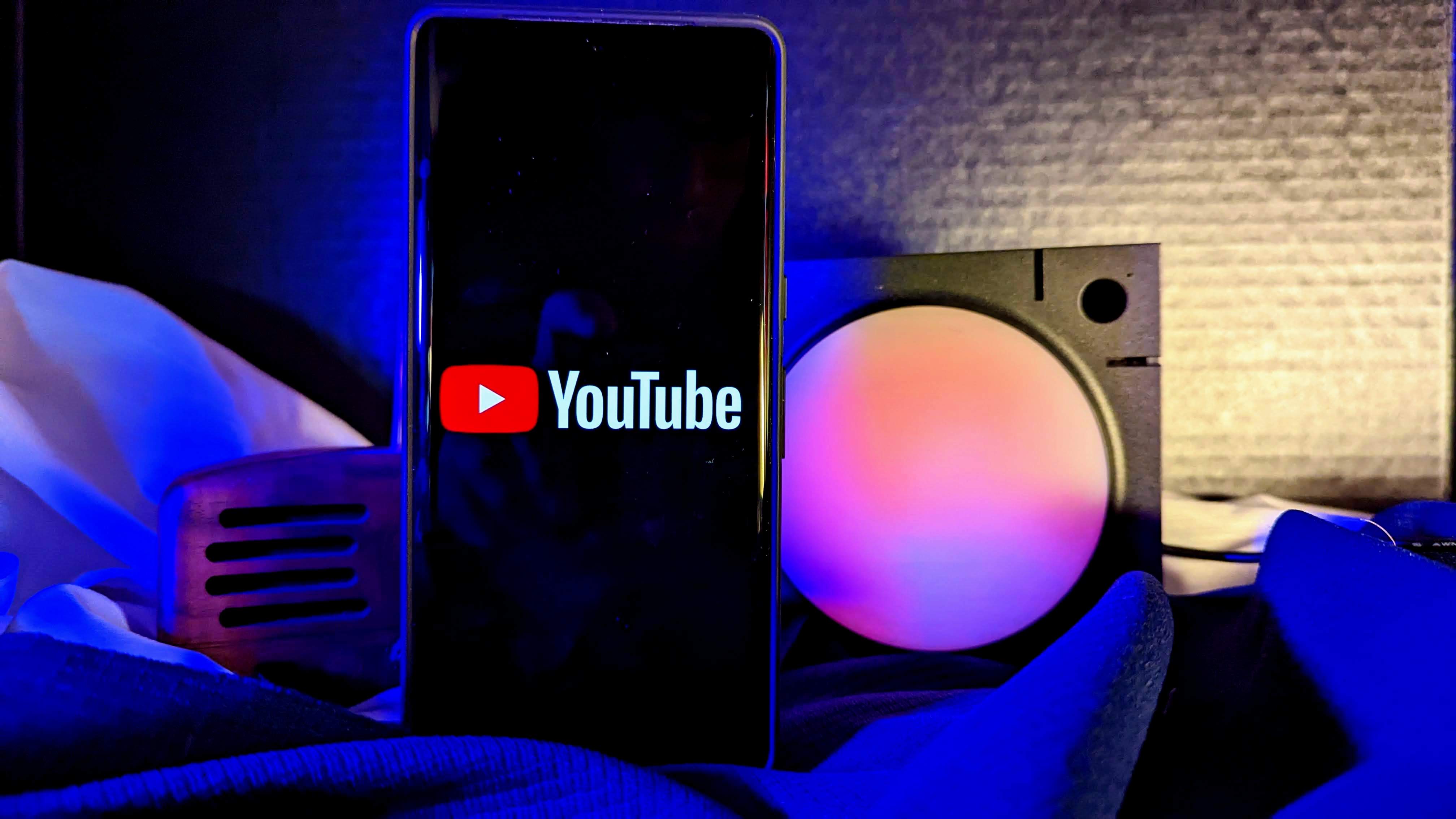Android Central Verdict
The Galaxy S24 Ultra is one of the best phones I've ever reviewed, offering a camera system that's better than ever, some welcome display changes, and one of the best software promises in the industry. Samsung listened to customers and directly addressed feedback and problems, delivering a better flagship through software updates in a short amount of time.
Pros
- +
Most eye-friendly display from Samsung yet
- +
Superb performance and battery life
- +
Excellent camera experience
- +
Useful AI features and seven-year update promise
- +
Quality build with flat display
- +
Near-perfect repairability score
Cons
- -
Uses PWM dimming at all brightness levels
- -
Display can be grainy
- -
Too many AI features are reliant on cloud connectivity
- -
Expensive
Why you can trust Android Central
Every year, it feels like phone announcements — particularly in the U.S. — get less and less exciting. We've begun to see diminishing returns in hardware innovation of standard slab phones, and even huge processing or software advancements no longer hold the weight of excitement they once had. Samsung's Galaxy S24 series fits quite perfectly into this description, as my colleague Harish Jonnalagadda wrote shortly after the phone series' announcement.
But there's beauty in the pursuit of perfection. Radical innovation or revolution isn't always necessary, particularly when a product is as good as the Galaxy S24 Ultra. It rarely does anything new, but it does almost everything extremely well. In a nutshell, Samsung took some of the best features of a Google Pixel and put them in the more reliable hardware of a Samsung Galaxy phone without removing any of the features Samsung fans know and love.
I certainly have my nitpicks — the square corners are uncomfortable, too many AI features are reliant on cloud connectivity, and the PWM rate still bothers my eyes when there's not enough ambient light — but what Samsung delivered in the Galaxy S24 Ultra is nothing short of pure excellence. It shows a company willing to innovate where it's necessary and unwilling to move when it's not.
More than that, it shows that Samsung listens to its customers and makes changes when requested. This is the flagship phone that has something for everyone, so long as you can afford it.
Samsung Galaxy S24 Ultra: Price and availability

The Galaxy S24 Ultra ships with a base of 256GB of storage and 12GB of RAM for $1,299. Samsung is no longer offering the cheaper model with reduced RAM this year as it did with previous Ultra models, although the best Galaxy S24 Ultra deals can get you upgraded to 512GB or 1TB of storage for less than you might expect.
The Galaxy S24 Ultra ships in Titanium Grey, Titanium Black, Titanium Yellow, and Titanium Violet colorways at your favorite retailer or carrier. Buying from Samsung.com grants access to Titanium Orange, Titanium Blue, and Titanium Green colorways.
All Galaxy S24 phones come with seven years of OS and security updates, a first for Samsung phones.
Get the latest news from Android Central, your trusted companion in the world of Android
For my final review, I spent six weeks with an unlocked Galaxy S24 Ultra provided by Samsung running One UI 6.1. The phone saw several updates and improvements during that time, including directly addressing requests from its most loyal users.
Samsung Galaxy S24 Ultra: Display and design
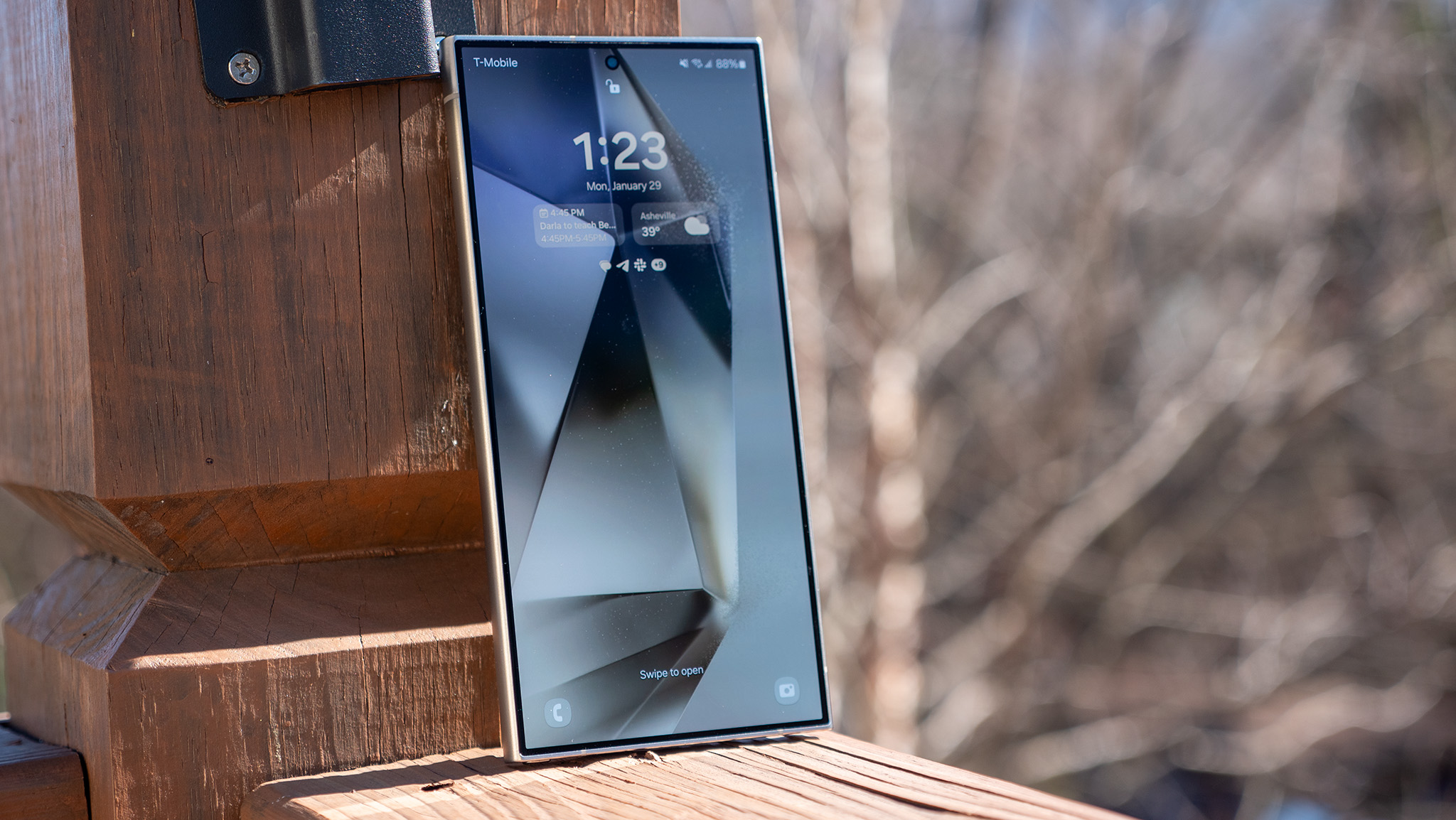
The display on the Samsung Galaxy S24 Ultra is the best display Samsung has ever created for one of its phones, but it hasn't been without problems. The elephant in the room is, undoubtedly, the "scandal" caused by the more natural tone of the S24 Ultra's display.
I far prefer a more natural-looking display, and it's objectively a better display because of it, but that doesn't mean some users were happy with the change. A late February patch added a "vividness" slider that clearly pleased fans, ensuring that the Samsung mantra of "something for everyone" was present everywhere on this phone.
Unfortunately, some units have a display defect we haven't seen in years. The AMOLED display panel on the phone exhibits what's called mura, meaning that the individually lit pixels on an OLED panel don't get to the same level of brightness as adjacent ones. This can lead to the display looking grainy. Here's a series of close-up photos I took to illustrate the difference between popular phones with OLED displays.
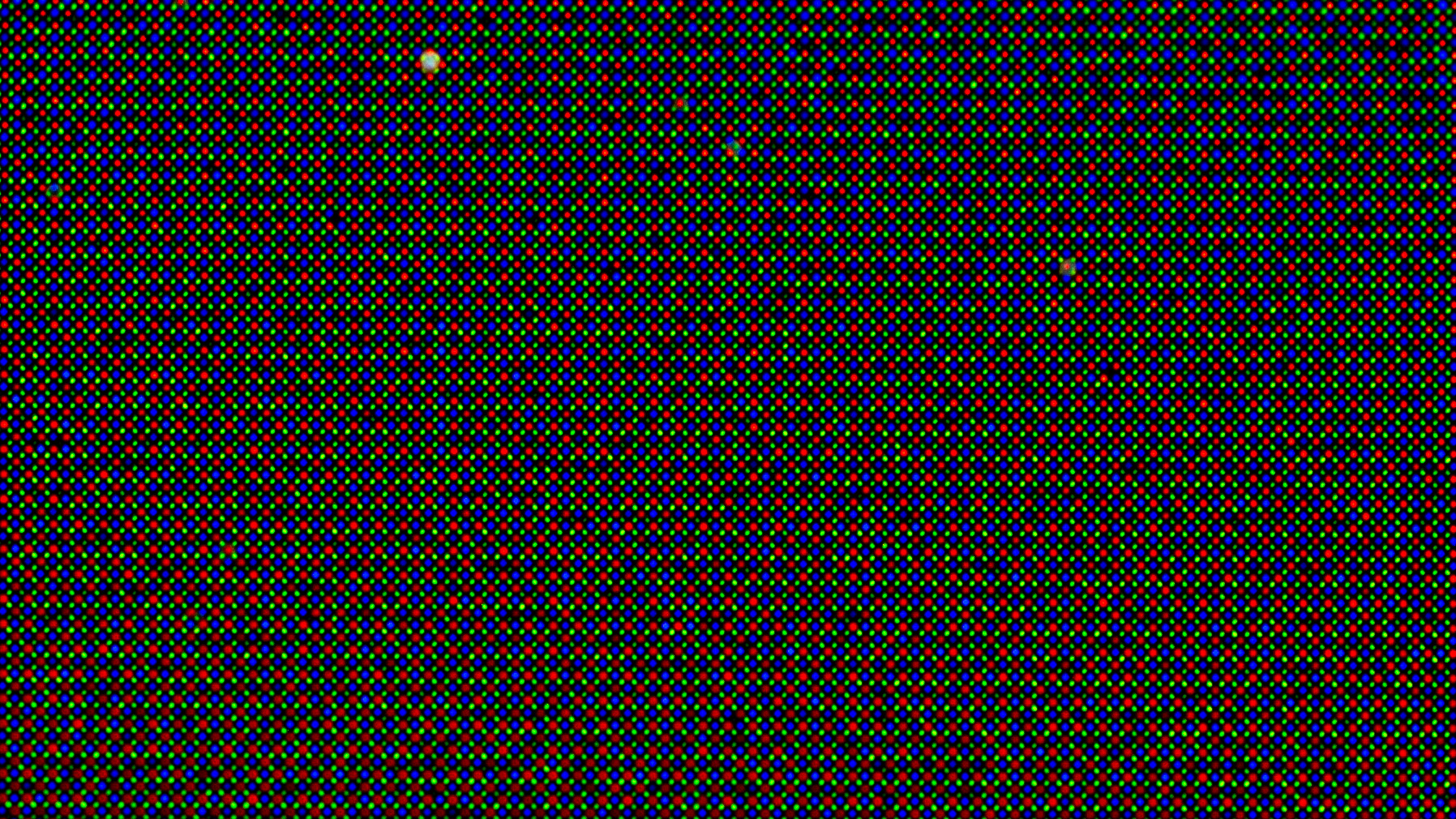
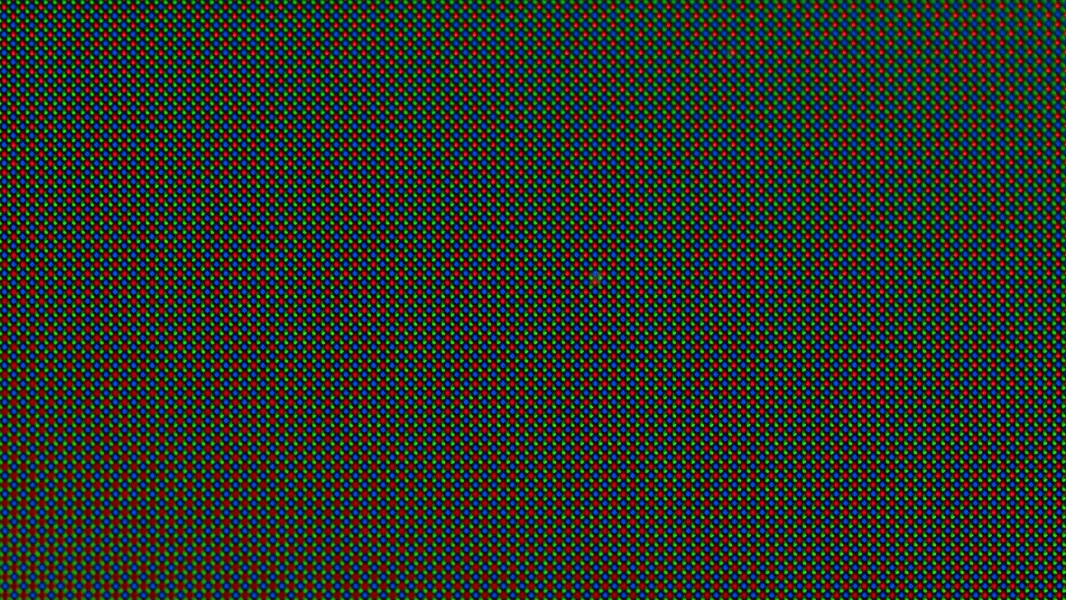


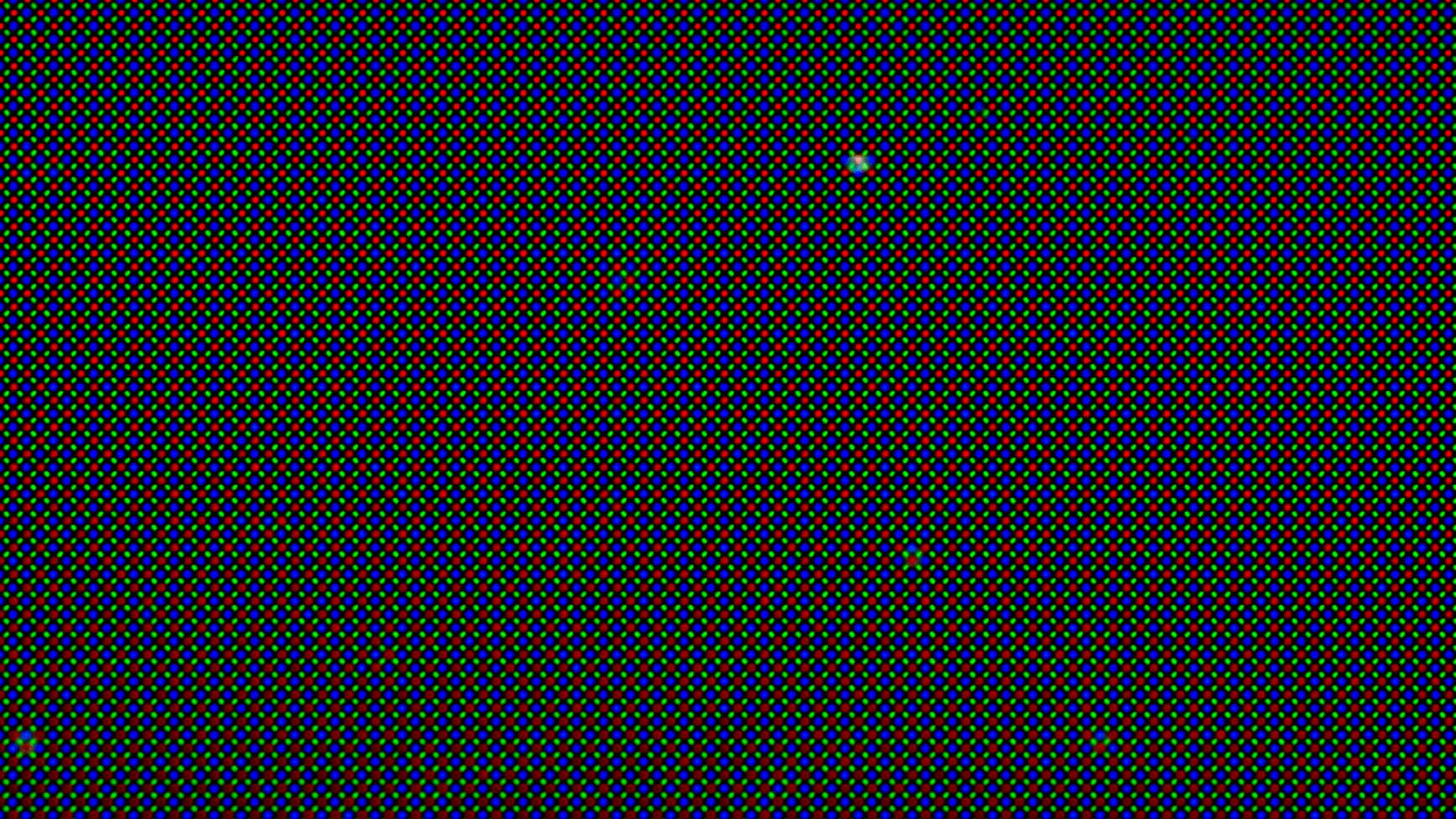
The first image is the Galaxy S24 Ultra, and it's readily apparent how unevenly lit the display is compared to the Galaxy S23 Ultra, Google Pixel 8 Pro, OnePlus 12, and Honor Magic 6 Pro.
We're still not sure how widespread this defect is but our review unit is affected and many users on social media have complained of the same problems. Samsung urges customers to reach out to technical support to receive a warranty replacement of their phone if it bothers them.

Now, while the S24 Ultra's launch was fraught with a few display issues, one change has been universally positive: the new anti-glare screen coating. The image above shows the Galaxy S24 Ultra with a tempered glass protector on the left — which represents what the glass would look like without this anti-glare coating — while the Galaxy S24 Ultra on the right is how the phone looks out of the box.
To say this makes a massive difference in readability in all lighting conditions is an understatement.
The display is easier to see, has a better PWM rate, and features more natural colors out of the box.
This is one of the best enhancements Samsung has ever added to its displays, and it makes seeing the Galaxy S24 Ultra easier in any light. If more displays implemented this sort of anti-glare filter, we wouldn't be seeing the obnoxious brightness race elevate so much.
Unfortunately, this means screen protectors will ruin the best part of the display. Furthermore, Samsung's continued use of ultrasonic in-display fingerprint sensors means that most tempered glass screen protectors will interfere with the performance of the fingerprint sensor. I've tried several and all of them make it very frustrating to unlock the phone via fingerprint.
| Category | Samsung Galaxy S24 Ultra |
|---|---|
| Display | 6.8-inch AMOLED (2,600 nits) |
| Resolution | QHD+ |
| Refresh rate | 120Hz (1-120); 240Hz touch sampling |
| Processor | Snapdragon 8 Gen 3 for Galaxy |
| Memory | 12GB RAM, 256GB/512GB/1TB storage |
| Camera 1 (Main) | 200MP (OIS), Laser Auto Focus (LAF), f1.7 |
| Camera 2 (Ultrawide) | 12MP, f2.2, 120-degree FoV |
| Camera 3 (Telephoto) | 10MP (OIS), f2.4, 3x optical zoom |
| Camera 4 (Telephoto) | 50MP (OIS) 2PD, f3.4, 5x optical zoom |
| Selfie Camera | 12 MP (2PD AF), f2.2 |
| Battery | 5,000mAh |
| Charging | 45W; 15W (wireless) |
| Protection | IP68; Gorilla Armor Glass; Titanium frame |
| Connectivity | Sub-6/ mmWave 5G; Wi-Fi 7; Bluetooth 5.3; UWB |
| Dimensions & weight | 6.40 x 3.11 x 0.34 in, 8.22oz |
| Colors | Titanium Grey, Titanium Black, Titanium Yellow, and Titanium Violet, Titanium Orange, Titanium Blue, Titanium Green |
The Galaxy Note's DNA runs as deeply through the Galaxy S24 Ultra as it has for the past few years, and you're either going to love or hate Samsung's boxy design here. I find a large phone with square corners very uncomfortable, but it also means that few phones look quite like a Galaxy S Ultra.
Samsung's addition of a titanium frame this year is largely gimmicky, but it means that the Galaxy S24 Ultra feels even more premium than any previous Galaxy S Ultra. There's something palpably more quality feeling about titanium over aluminum, and the matte texture means it's both easier to grip and doesn't attract fingerprints like Armor Aluminum on the S22/S23 Ultra.
Beyond just the frame, Samsung has flattened the display for the first time in the history of the series, even if the actual glass itself is still slightly curved at the edges.




The titanium frame feels wonderfully premium, and the anti-glare layer on the flat display is nothing short of perfection.
While camera islands are still off-center and raised quite a bit — leading to wobble when placed on a table — the best Galaxy S24 Ultra cases all solve this problem. If you're like me and normally don't like using cases, slapping a Thinborne case on it will make it feel virtually caseless.
But you have to be careful about which cases you use on the phone, particularly if you want to use the best MagSafe accessories. As is the case with the S22 Ultra and S23 Ultra, cases that don't use proper magnetic shielding will cause interference with the S Pen. Thankfully, this only happens with some cases and with some MagSafe accessories.
While there's no risk of long-term damage if you use the wrong MagSafe case, you won't be able to use the S Pen properly while using the wrong case/accessory combo.
PWM measurements
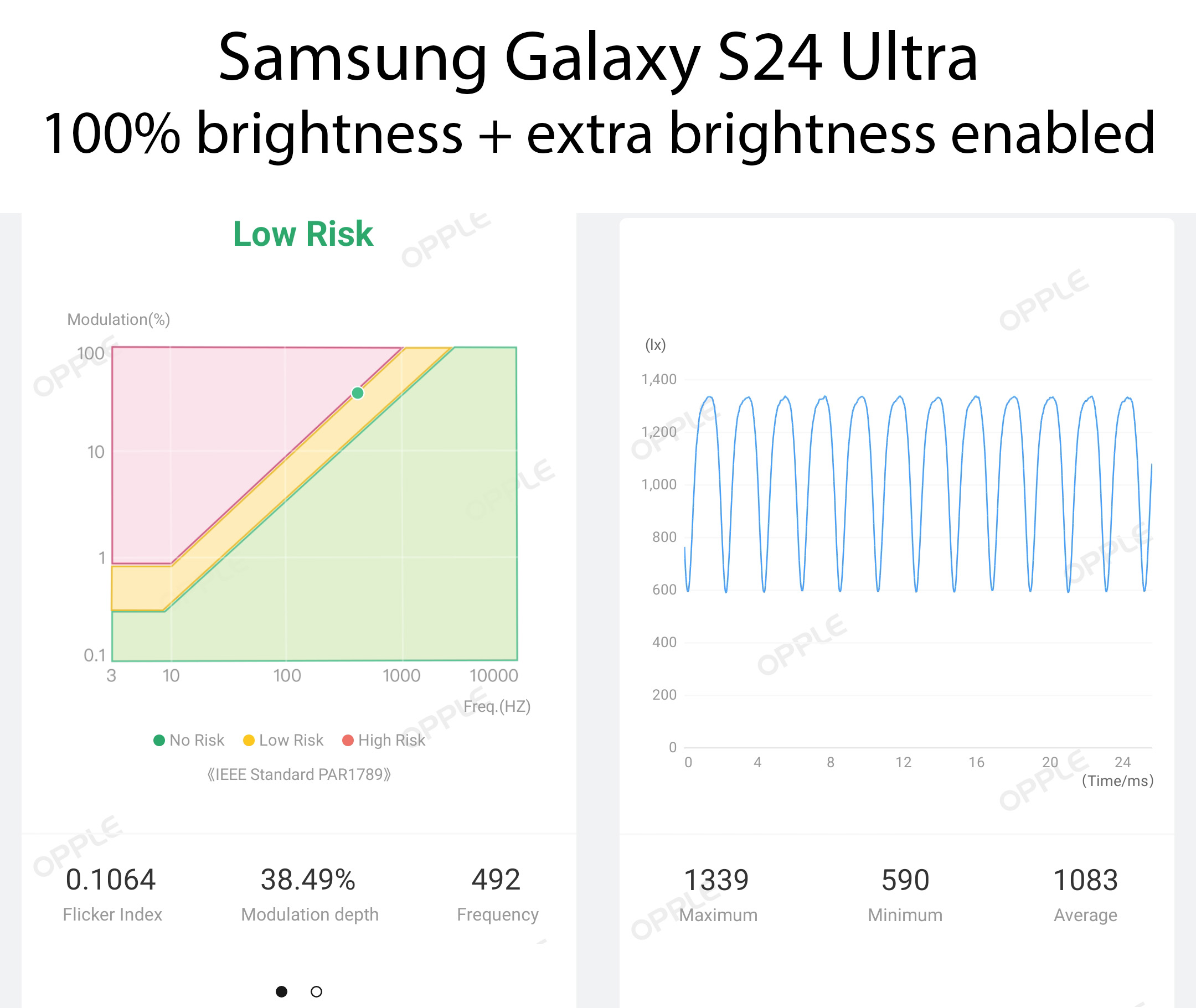
As expected, the Galaxy S24 Ultra uses PWM dimming at all brightness levels, and there's no option to enable DC-like dimming of the display at high brightness levels, as is the case with some other new phones like the OnePlus 12.
However, Samsung did something completely unexpected this year: they increased the PWM frequency to 480Hz, up from 240Hz. This is the sort of advancement we've needed to see from Samsung for years, and it means that they've finally matched the PWM rate Apple uses for its OLED phones.
That means I can use the Galaxy S24 Ultra for substantial amounts of time without having to wear my astigmatism-correcting glasses during the day. At night or on cloudy days, the flickering display still negatively affects me but it takes a lot longer than when I try to use a Galaxy S23 Ultra — a phone that gives me eye aches and
a headache within seconds.
It's incredibly refreshing to see Samsung make these changes, making me hopeful for the future of AMOLED-powered phones.
Samsung Galaxy S24 Ultra software, performance, and battery life

With the Galaxy S24 family, Samsung has firmly declared 2024 to be the year of AI. Thankfully, for anyone who bought a 2023 Galaxy phone, these features are also coming to your device. Galaxy AI encompasses a suite of a dozen tools - some new, some repackaged existing ones - that aim to create a more helpful experience.
Most experiences require cloud connectivity to work, though. Worse, Samsung may charge for these cloud-connected experiences in two years unless the terms change. But, will you really care much about these cloud-connected experiences outside of a few niche scenarios?
My guess is, no.
Here's a list of the features that work without any internet connectivity at all:
- Edit suggestions for photos
- Photo Ambient Wallpaper
- Translation features (Calls, Interpreter, Messages)
- Instant Slow-Mo
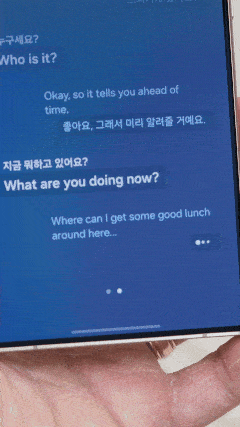
Funny enough, these were the only features I found myself using on any kind of regular basis. It's not that the other cloud-connected features are useless, it's just that they're not something I care much about. These are the features you need to be connected to the internet to use.
- Auto Format
- Circle to Search
- Generate Cover
- Generative Edit
- Generative Wallpaper
- Magic Compose Texting
- Summary (Samsung Internet, Samsung Notes, Voice Recorder)
- Writing Assist
The lone exception was Google Circle to Search, a feature that's not even exclusive to the Galaxy S24 family in the first place. In short, all of the above features work quite well and are extremely handy when you need them. I'm glad Samsung added them, and I think these sorts of tools will significantly enhance the smartphone experience going forward.
You're just not going to find yourself using them every day, and that's probably just fine.
Ray-tracing on a phone is a gimmick. Thankfully, battery life and performance here are not.
On the performance front, I can't ask for much more of a smartphone. While the Galaxy S24 supports ray-tracing features, it's largely a gimmick that you won't see most games implementing in any way for a very long time.
It's one of those bullet points on a spec sheet that looks nice but has very little real value. The real use of ray-tracing capabilities on a GPU is something like DLSS, which uses AI processing to enhance graphics and performance over what pure silicon enhancements can. Samsung is not using this but a spokesperson told me that the company is looking into this and other more practical uses of ray-tracing hardware.
The battery life of the Galaxy S24 Ultra is nothing short of stupendous in every regard. I was able to pull around two days out of a single charge throughout the entire review period (10 days, as of this writing), and that's pushing 100% brightness the entire time because of my sensitivity to PWM-dimmed displays.
Samsung has long lagged behind competitors on charging speed, and while I completely agree with my colleague Namerah about Samsung's need to increase charging speeds, having two-day battery life helps me forget about this plea even just a little bit.
A 30W charger (the S24 Ultra supports up to 45W) was able to add 36% battery in 20 minutes (30% to 66%), which is more than enough charge to get me through another 24 hours of use. Still, it's hard to find this acceptable when the OnePlus 12 goes from under 15% to 100% battery in the same time frame.
Samsung Galaxy S24 Ultra: Cameras

Cameras have long been one of my favorite parts of the smartphone experience, but Samsung phones have rarely graced my list of favorite smartphone cameras. That changes with the Galaxy S24 Ultra, which now does a much better job than any previous Samsung phone in most categories.
In my Galaxy S24 Ultra camera review published shortly after the phone debuted, I noted that the phone's overall quality was marred by its inability to capture moving subjects. Since then, Samsung has issued a patch that irons out this problem quite a bit. It's still not perfect, though, as many rivals like Google, Vivo, and Honor do a better job of capturing moving kids or pets, but it's an improvement over how the phone handled these situations at launch.
Below, you'll find a comparison. The first two images were taken on two different days before the update, while the second two images were taken after the February update.



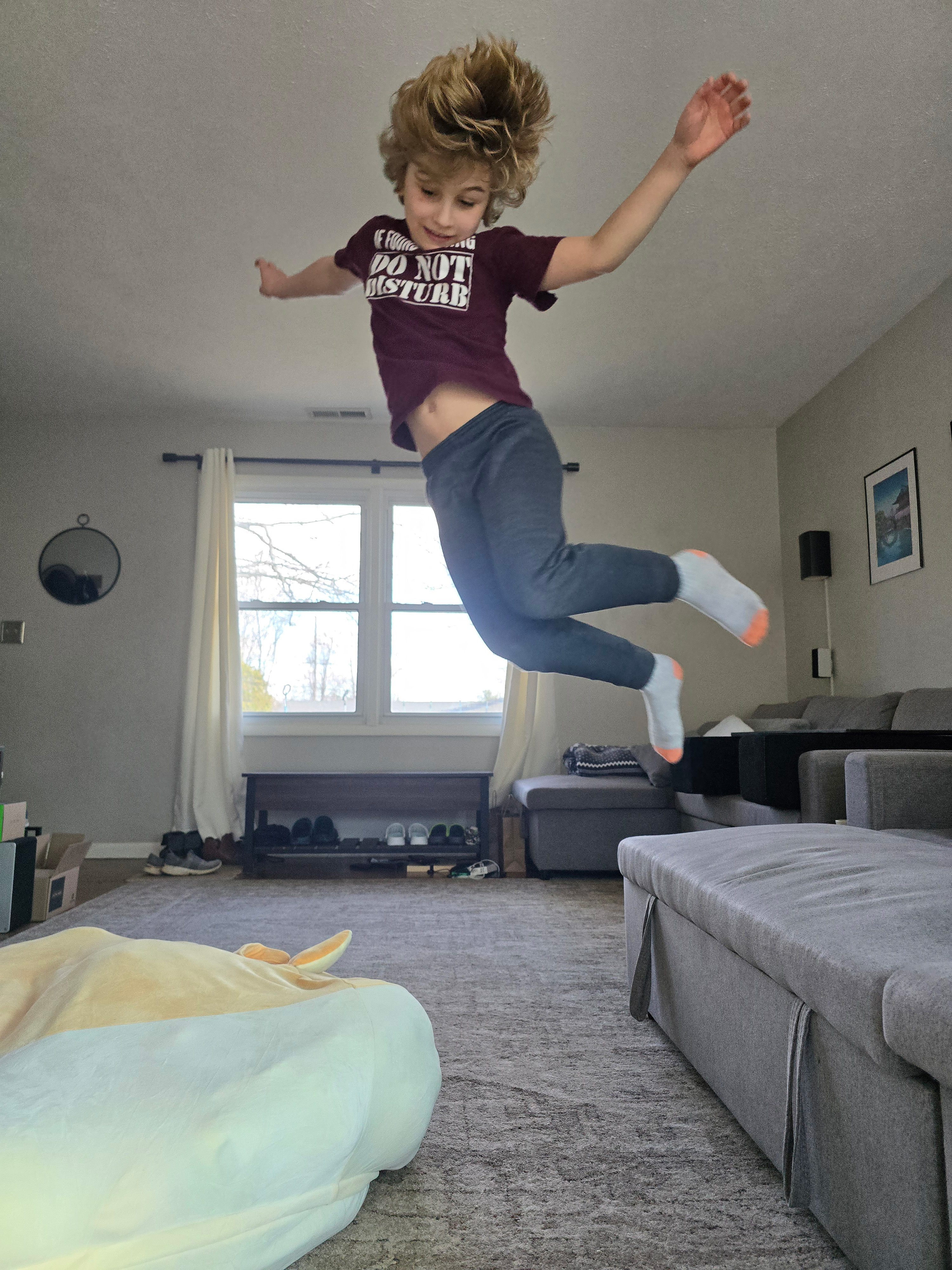
Samsung has improved everything from zoom detail to more natural processing, better motion capture, and even more solid video recording performance.
The difference here is quite remarkable, and it helps to mostly resolve one of the only negative points of the camera. Motion capture is still not quite as good as you'll find on a Google Pixel 8 Pro, Honor Magic 6 Pro, or some other competing phones, but it's more than good enough and should satisfy just about everyone.
And, thankfully, the rest of the experience does beat most competing phones, especially in the U.S. where there aren't as many options for smartphones as you'll find worldwide.








The Galaxy S24 Ultra's telephoto cameras win in every lighting condition I tested them in. The result is a clearer, more detailed photo that looks better from every angle. We worried about the change from a 10x optical lens to a 5x optical lens when the phone was announced, but the new 50MP sensor behind the optics more than makes up for the difference.
The rest of the camera experience is pretty similar to the Galaxy S23 Ultra, though, which is largely a good thing. Samsung improved the processing on the main sensor so it looks more like it came from a proper camera instead of a smartphone, and video capture is as good as you'd expect from a Galaxy S Ultra phone.
Samsung Galaxy S24 Ultra: Competition
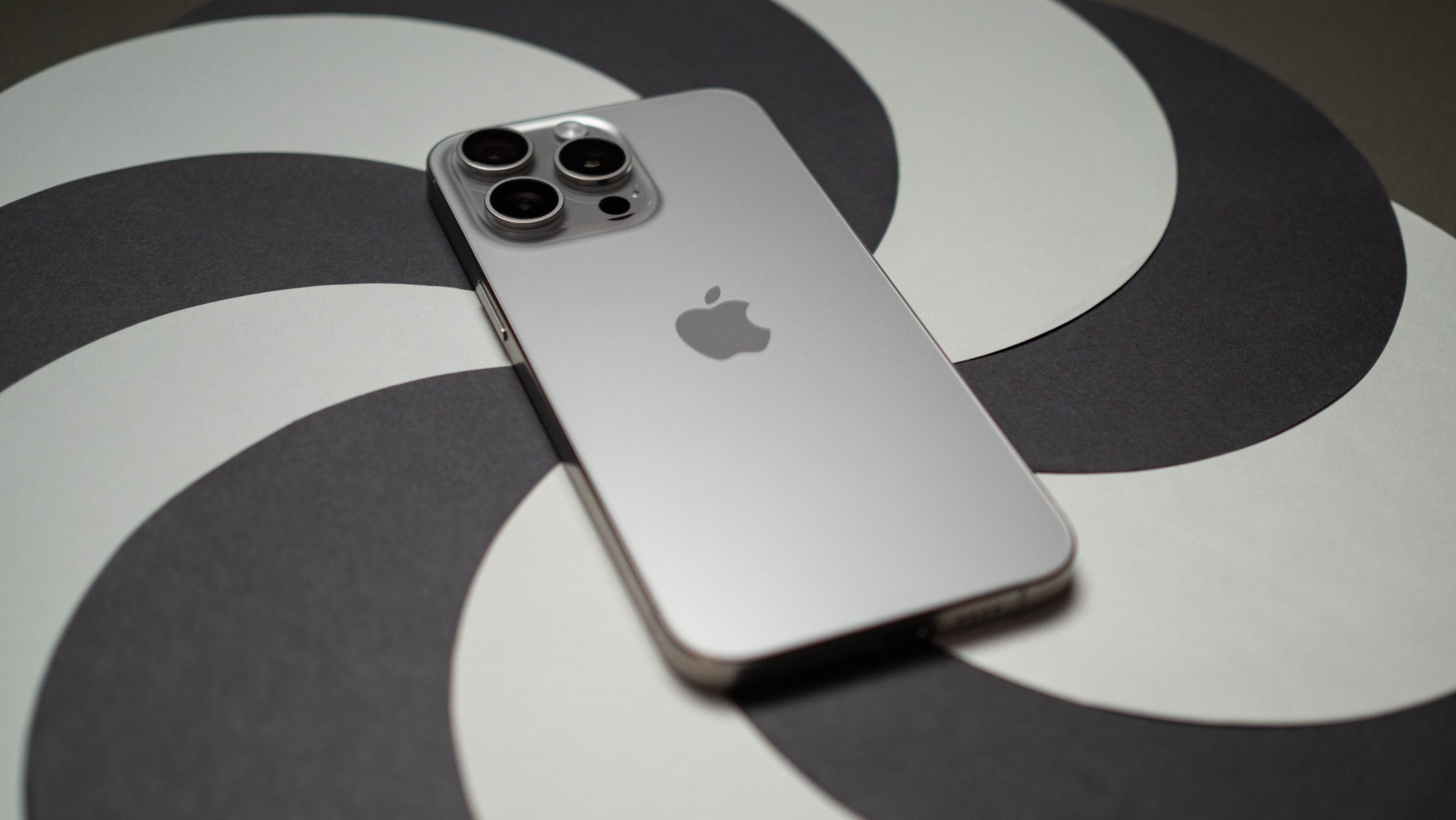
At this price level, the only real competition for the Galaxy S24 Ultra in the U.S. is the iPhone 15 Pro Max. It's an incredible phone with an amazing camera, Apple's long-term software support (that Samsung finally matches), and that ecosystem that people specifically switch to Apple for.
On the Android side, nearly all the best Android phones cost much less than a Galaxy S24 Ultra. The OnePlus 12 launched for $799 with the same amount of RAM and storage as Samsung offers at $1,299. Its camera doesn't match Samsung's in most cases — portrait mode being the biggest exception — but OxygenOS is a fantastic experience and a UI that I prefer over Samsung's One UI.
Worldwide, phones like the Honor Magic 6 Pro and Xiaomi 14 series challenge Samsung in substantial ways. Most offer better pricing, even better cameras, and far better displays — minus the excellent anti-glare coating on the S24 Ultra. The downsides are that these companies don't offer the same update promise, aren't as widely available, and often have UI designs that are less familiar to Android enthusiasts.
Samsung Galaxy S24 Ultra: Should you buy it?

You should buy this if...
- You want the best Android phone in the U.S.
- A high-quality camera is important to you.
- You like to hold on to your phone for years.
You shouldn't buy this if...
- You have kids or pets that don't hold still for photos.
- You're extremely PWM-sensitive.
- You're not comfortable with spending $1,300 or more on a phone.
Anyone using a Galaxy S23 Ultra right now shouldn't bother upgrading. The new anti-glare filter is incredible, and I hope to see it on more Samsung phones in the future, but S23 Ultra owners can at least partly replicate the effect with an anti-glare screen protector for the time being.
The upgraded PWM rate on the S24 Ultra is a massive deal for the future and makes it possible for some flicker-sensitive folks to use a Samsung phone — something that hasn't been possible for a long time. You may be okay without it if the Galaxy S23 Ultra's screen doesn't give you eye aches or headaches.
But there's something to be said about Samsung's value here, despite the price. A $1,300 starting price is hard to stomach, but it's also the first time Samsung has promised to keep the phone updated and relevant for seven years. That, alone, might be worth the upgrade for anyone who likes to hold on to their phones for a while.
S23 Ultra owners shouldn't bother upgrading, but everyone else should seriously consider this as the best new premium pick.
On a more personal note, I've been so pleasantly surprised with the Galaxy S24 Ultra. It's the first non-folding Samsung phone I've enjoyed using in a long time. Last year, I was ready to move on from the latest Samsung device because of how its displays made me feel sick, and now I can finally use one again without pain. During the day, at least.
Samsung's excellent advancements in camera quality ensure that I'll no longer reach for the Pixel 8 Pro just to take a great picture. That's truly fantastic news for Samsung users as it means the company's phones no longer play second fiddle to Google's flagships.
But Samsung's reliance on cloud-based AI is problematic, especially in light of companies like Honor and Oppo putting so much emphasis on locally-computed AI. Aside from taking even better photos, these phones won't have to go to the internet even for complex AI-based tasks.
Galaxy AI is great and shows that Samsung is willing to adjust and evolve quickly with the changing market — even if it means more reliance on Google and less on Samsung's own in-house software features — but MWC showed us that other companies are pushing harder and faster toward an AI-run future without requiring the cloud, and I think that's a far more important goal than what Samsung is doing here.

You must confirm your public display name before commenting
Please logout and then login again, you will then be prompted to enter your display name.


